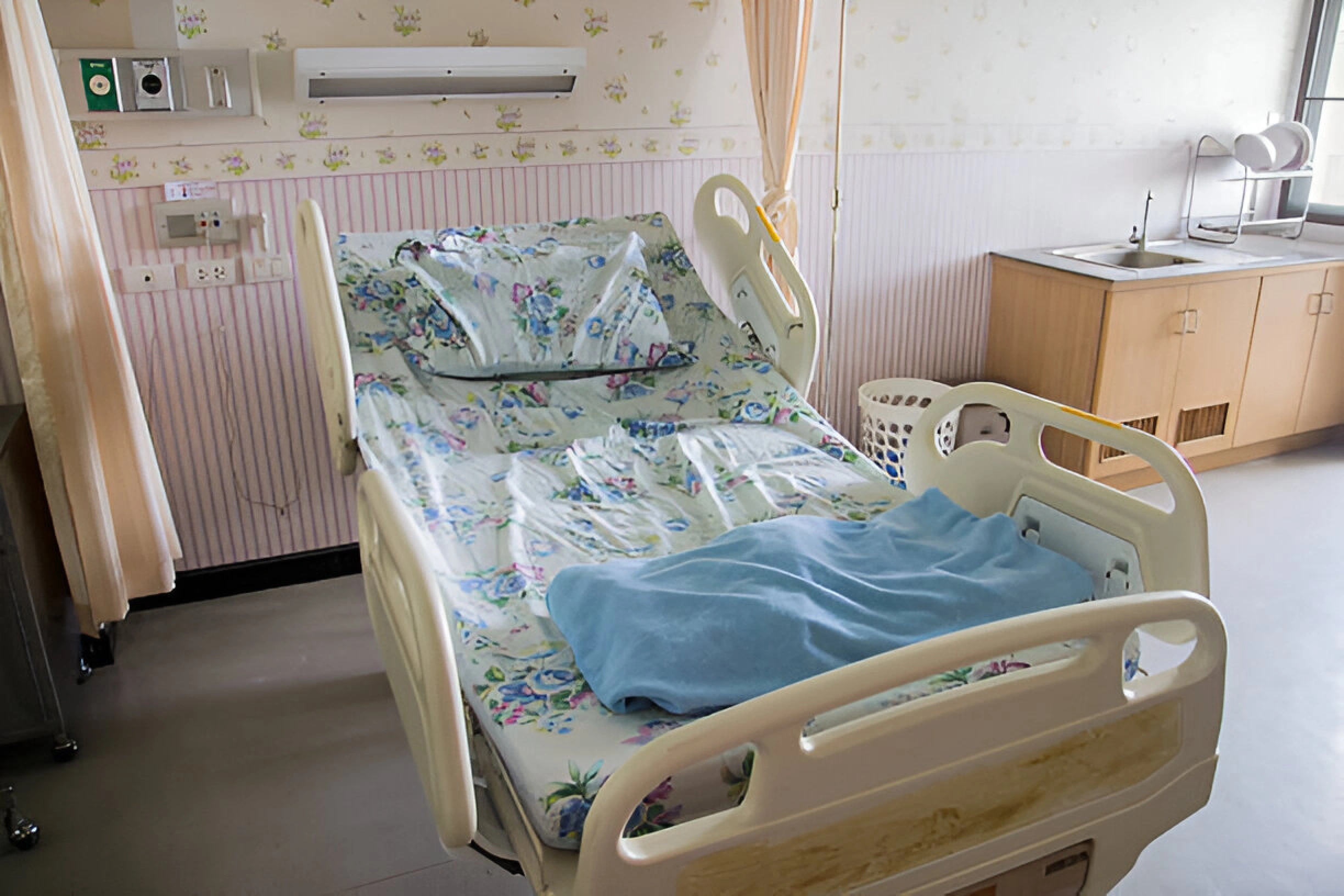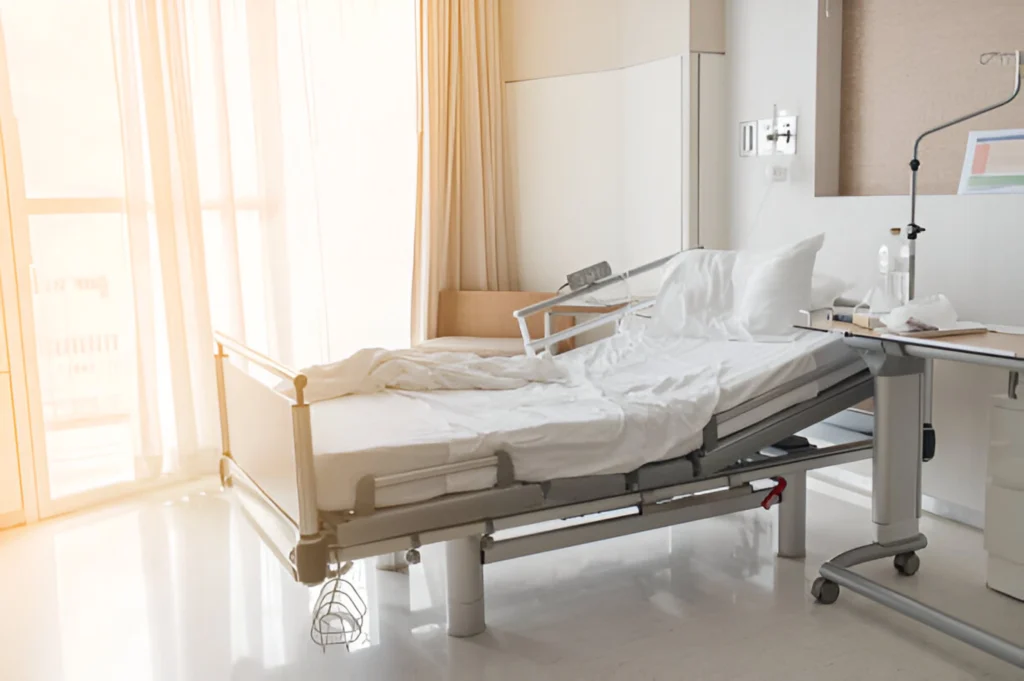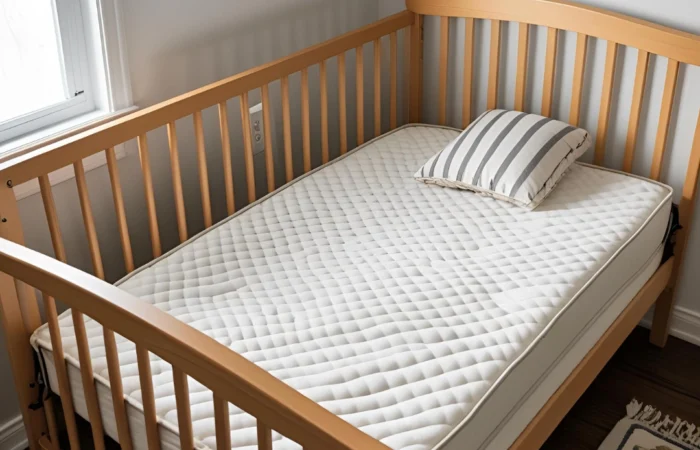When you’re caring for a loved one at home, picking the right hospital bed for home use is key. Whether they’re recovering from surgery, managing a health issue, or just need more comfort, the right bed can make everything easier. I’ve seen how much of a difference a good hospital bed for home can make for both the patient and their caregiver. In this guide, I’ll share tips on choosing the best bed, including why hospital beds floor options are important for safety. Let’s get started and help you find the perfect solution!
What Are Hospital Beds for Home Use?
A hospital bed for home use is different from a regular bed. It is designed to help people who are recovering from surgery, managing a health issue, or needing extra care at home. These beds have special features that make them safer and more comfortable.
Hospital beds can be adjusted to different heights. They also have side rails to prevent falls and can be paired with special mattresses to reduce pressure. These features help patients feel better and make it easier for caregivers to assist them.
Overview of Hospital Beds for Home Care
Hospital beds for home care are built to support healing and comfort. Unlike regular beds, they can change height and position. This makes it easier for patients to find a comfortable position and for caregivers to provide care.
Some key features of hospital beds include adjustable height, which helps patients get in and out of bed. Side rails keep patients safe and stop them from falling. And specialized mattresses help with pressure relief, reducing the risk of bedsores.
Why Would You Need a Hospital Bed at Home?

You might need a hospital bed at home for several reasons. After surgery, these beds help patients recover by letting them adjust their position. For those with chronic conditions, a hospital bed can make daily life easier and more comfortable.
I remember when my grandmother had knee surgery. We set up a hospital bed for her at home. The bed’s height adjustments helped her get up with less pain. The side rails kept her safe from falling, and the mattress made her more comfortable. It really helped her recovery and gave us peace of mind.
For patients with mobility issues or those needing help with daily tasks, hospital beds can improve comfort and safety. They also make caregiving easier for family members.
Types of Hospital Beds for Home Use
When choosing a hospital bed for home use, there are a few types to consider. Each one is designed for different needs. Let’s go through them so you can pick the right one.
Hi-Low Beds
A hi-low bed can move up and down. This makes it easier for caregivers to help patients get in and out of bed. The bed’s height can be lowered for easy transfers or raised for comfort when sitting up.
These beds are perfect for people with mobility problems. They reduce the effort needed to move around and help make the patient more comfortable. I saw this firsthand when a relative had knee surgery. The hi-low bed made it easier for them to get in and out of bed with less pain.
Manual vs. Electric Hospital Beds
You have two choices here: manual and electric beds. A manual bed needs a crank to adjust the height or position. These are less expensive, but they can be hard to adjust, especially if the patient needs frequent changes.
An electric bed uses a remote to adjust the bed. It’s much easier for both the patient and caregiver. While electric beds cost more, they are worth it for comfort and ease of use.
Specialized Hospital Beds for Specific Needs
Some beds are designed for special needs. Bariatric beds support larger people with higher weight capacities. Pediatric beds are smaller and safer for children.
Another type is the low bed. It sits closer to the floor, making it safer for people at risk of falling out of bed. These beds help prevent injury from a fall.
Each of these beds is made to address specific needs, whether it’s weight, age, or safety concerns. Always consider the patient’s needs before choosing a bed.
Features to Consider When Choosing a Hospital Bed for Home
When picking a hospital bed for home use, there are some key things to consider. These features will help you find the best fit for both the patient and the caregiver. Let’s go over the most important ones.
Size and Dimensions
First, think about the bed’s size. Hospital beds come in different sizes. You can choose between twin, full, or even queen-sized beds. Twin-size works best for smaller spaces. Full or queen-sized beds offer more room and comfort.
Also, make sure there’s space around the bed for the caregiver to move. Trust me, I’ve seen how difficult it can be if the bed is too cramped.
Adjustability and Positioning
Hospital beds can adjust in height. You can raise or lower the head or feet. This helps patients rest comfortably. It’s especially useful for those with conditions like sleep apnea or acid reflux.
I remember my aunt had surgery. Adjusting the head of her bed helped her sit up with less pain. This simple change helped her sleep better.
Mattress Options
The mattress is just as important as the bed. You can choose from foam, gel, or air mattresses. Foam mattresses are basic and comfy. Gel and air mattresses give better pressure relief.
I noticed when my mother-in-law switched to a pressure-relieving mattress, it helped her stay more comfortable and kept her skin healthy.
Safety Features: Side Rails and Locking Mechanisms
Safety is a big deal. Many hospital beds have side rails to stop patients from falling out of bed. This is great for older adults or people who can’t move easily.
Also, look for beds with locking mechanisms. These locks keep the bed in place when adjusting. When we helped my grandmother adjust her bed, the lock kept it steady and safe.
Hospital Beds for Home: Costs and Insurance Coverage
When buying a hospital bed for home use, you’ll likely wonder about the cost. Knowing the price ahead of time can help you plan. I’ll break it down for you so it’s easy to understand.
Average Costs of Hospital Beds for Home Use
The cost of hospital beds varies. A manual bed is the least expensive. It usually costs between $500 to $1,000. These beds need a crank to adjust the height. They are simple but effective.
Electric beds are more expensive. They range from $1,200 to $3,000. These beds adjust with a remote, making it easier for caregivers and patients. They are more comfortable and convenient.
If you need a special pressure-relieving mattress, it can cost between $100 to $500. These are important for patients who spend a lot of time in bed, as they help prevent sores.
Does Insurance Cover Hospital Beds?
Good news! Some insurance plans cover the cost of hospital beds. Medicare, for example, may help if your doctor says the bed is necessary for your care.
However, it’s not always simple. Some plans might only cover renting the bed instead of buying it. And they may not cover all the costs. Be sure to check your plan.
If your insurance doesn’t cover the bed, look for financial assistance programs. Some suppliers offer payment plans. You might also find discounts or help from local organizations.
How to Set Up and Maintain a Hospital Bed at Home
Setting up and taking care of a hospital bed at home doesn’t have to be hard. With a few easy steps, you can make sure the bed is safe and comfortable. I’ll walk you through the process so everything runs smoothly.
Setting Up the Bed
When you first bring the bed home, here’s how to set it up:
- Pick the Right Spot: Find a spacious area where caregivers can easily move around. You also want the bed to be near anything you might need, like a bathroom or phone.
- Assemble the Bed: If the bed needs to be put together, follow the instructions. It’s easier if someone helps with lifting or positioning the parts.
- Place the Mattress: Make sure the mattress fits the frame snugly. It should be comfortable but not too tight.
- Adjust the Height: Most hospital beds let you change their height. Set it so caregivers can help the patient without bending too much. The bed should be about waist height.
- Check the Safety Features: If the bed has side rails, make sure they’re secure. Test the locking mechanisms to make sure they work.
A quick tip: Leave some space around the bed so caregivers can move easily and reach the patient.
Maintenance Tips
Once the bed is set up, here’s how to keep it in good shape:
- Clean the Bed: Dust can gather on the bed frame. Wipe it down with a soft cloth and mild soap. Use disinfectant wipes around the head and foot area to keep things clean.
- Check the Mattress: If the mattress is foam or gel, clean spills right away with a damp cloth. For air mattresses, check the pressure to make sure it’s properly inflated. Rotate or flip the mattress when needed.
- Lubricate the Bed: Sometimes, hospital beds can squeak or get stiff. Use some silicone spray on the moving parts to keep them smooth.
- Inspect Electrical Parts: For electric beds, check the power cords for damage. Make sure the remote works. If the bed doesn’t move smoothly or makes noise, you might need a repair.
- Look at the Side Rails: If your bed has side rails, check that they are safe and easy to use. Over time, they can get loose or stuck.
Conclusion: Choosing the Right Hospital Bed for Home Use
Picking the right hospital bed for home care is really important. It affects comfort, safety, and peace of mind. A good bed can help both the patient and the caregiver. It can make recovery easier and reduce stress for everyone involved.
I’ve seen how much the right hospital bed can help. When my family cared for my grandmother after surgery, the bed made a huge difference. It helped her recover, reduced her pain, and made it easier for us to care for her.
When you choose a bed, think about what the patient needs. Make sure the bed will keep them safe and comfortable. It should also make things easier for the caregiver.
Talk to a healthcare provider if you’re not sure. The right bed will give everyone more comfort and peace of mind. It’s a choice that can really make a difference.
FAQ – Common Questions About Hospital Beds for Home Use
read More:
Proven Tips for Choosing the Best Waterbed Fitted Sheets
The Secrets to Finding a Comfortable Split King Sheet
The Ultimate Baby Sleep Sack for Peaceful Nights
Secrets to a Perfect 2-Month-Old Sleep ScheduleAmazing Hacks for Toddler Climbing Out of CribChoosing the Best Mattress for Side Sleepers












Leave Your Comment: